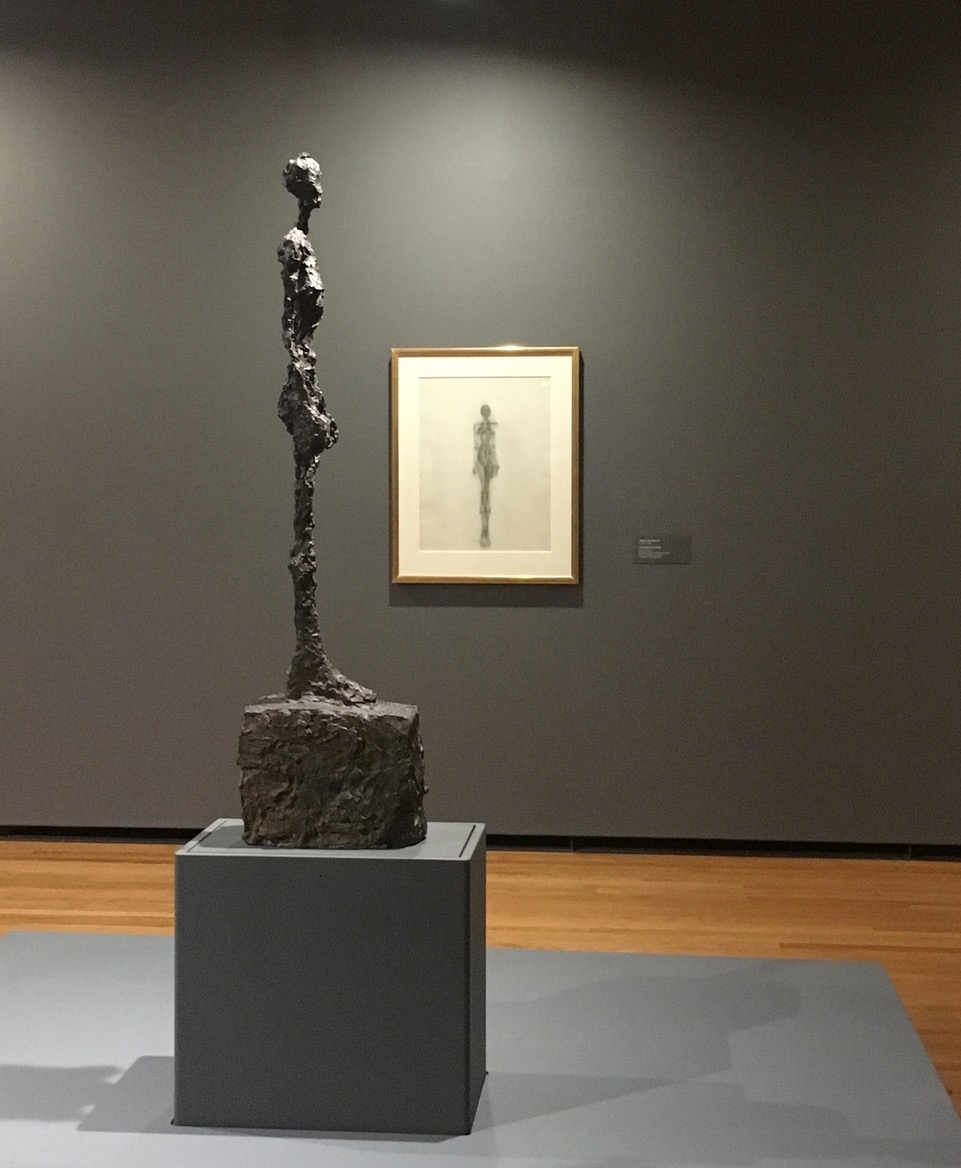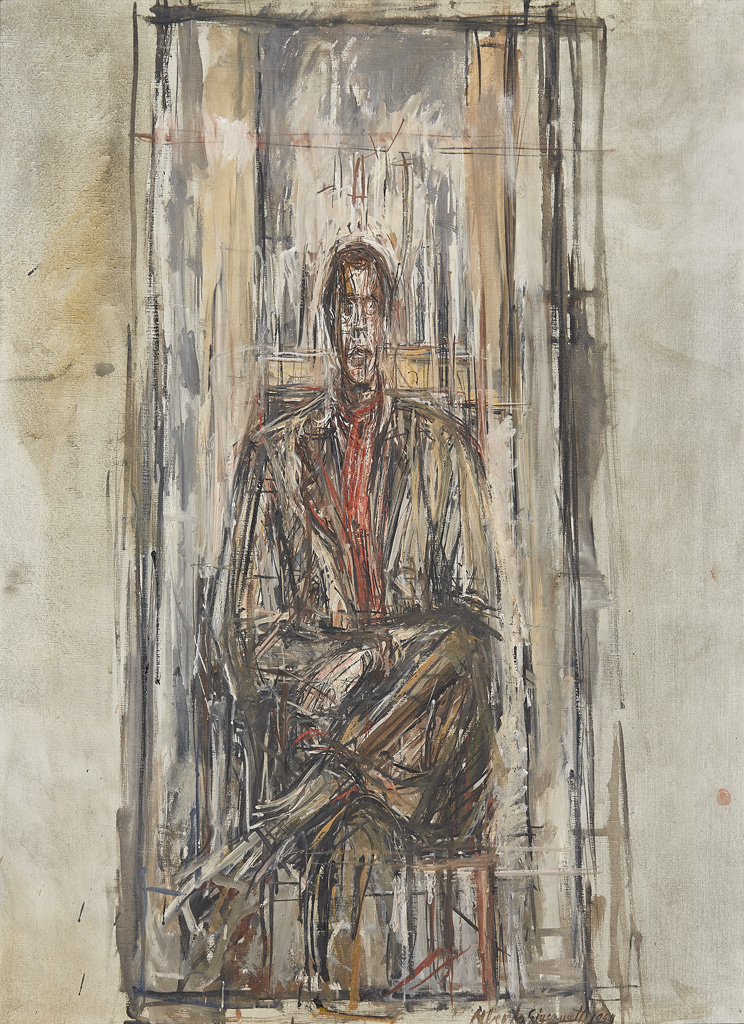Not Just Reality, But Truth: Giacometti and the Virtues of Style
Giacometti - Figure
'The object of art is not to reproduce reality, but to create a reality of the same intensity.'
Alberto Giacometti
On a recent trip to Vancouver I visited an exhibition of the work of Alberto Giacometti (Vancouver Art Gallery until 29 September). The show originates from the collection of Robert and Lisa Sainsbury held by the Sainsbury Centre for Visual Arts at the University of East Anglia, Norwich.
Inevitably I was drawn to Giacometti’s tall, slender bronze figures. Big feet, small heads, rough hewn and long limbed. Standing somber, pacing purposefully, stripped bare, isolated and alone. They seem to suggest the very essence of humanity - and after the Second World War they were taken to represent society’s existential crisis.
'When I make my drawings... the path traced by my pencil on the sheet of paper is, to some extent, analogous to the gesture of a man groping his way in the darkness.’
I was also struck by Giacometti’s portraits. They sit square on, staring us straight in the eye. We can see how the artist has restlessly worked and reworked the image: the scratching and scraping; the narrowing focus on posture, frame, face and eyes; the struggle to capture an essence, an identity, a soul.
‘One day when I was trying to draw a girl, something struck me: suddenly I saw that the only thing that stayed alive was her gaze. The rest, the head which was turning into a skull, became more or less the skull of a dead person. The only difference between the dead and living is the gaze.’
Giacometti was notorious for refusing to accept that his portraits were ever finished. On one occasion the Sainsburys needed to get a work signed. But they were warned not to let the artist get his hands on the piece, as he’d never give it back.
Alberto Giacometti - Diego Seated, 1948,
oil on canvas
'That's the terrible thing: the more one works on a picture, the more impossible it becomes to finish it.'
Perhaps there is something we can all learn here. We live in an era of pragmatism and practicality; of discipline around deadlines. We’re taught that ‘done is better than perfect’ and ‘perfect is the enemy of good’. But in the digital age a task is never complete, a goal never reached. Endings represent a submission, a letting go, a kind of complacency. Nowadays we must constantly improve, endlessly evolve. We shouldn’t be afraid to keep on, to persist in the quest for perfection.
'Failure is my best friend. If I succeeded, it would be like dying. Maybe worse.’
One section of the exhibition considers Giacometti’s sources and influences. In the 1920s he studied classical sculpture in Paris, and he spent days in the city’s museums sketching and making notes. He was clearly inspired by Egyptian, Greek, Roman and West African art.
‘Have you ever noticed that the truer a work is the more stylized it is? That seems strange, because style certainly does not conform to the reality of appearances, and yet the heads that come closest to resembling people I see on the street are those that are the least naturalistic – the sculptures of the Egyptians, the Chinese, the archaic Greeks and the Sumerians.’
Many years ago, on a visit to Athens, I came across the Museum of Cycladic Art. I was bowled over by the elegantly reduced female figures, highly stylised in smooth white marble. Arms folded, flat faced and sharp nosed, they reach out to us across the centuries, cool and aloof, silent and knowing. Originating from a small group of Aegean islands in the second and third millennia BC, Cycladic figures are consistently cited as an inspiration for modern sculptors.
And here they are again at a Giacometti exhibition on the other side of the world. The artist explained why he found them so compelling.
‘If I didn’t know that your skull had a certain depth, I couldn’t guess it. Therefore, if I made a sculpture of you absolutely as I perceive you, I would make a rather flat, scarcely modulated, sculpture that would be much closer to a Cycladic sculpture, which has a stylised look, than to a Rodin or Houdon, which has a realistic look.’
Giacometti regarded art as 'the residue of vision.’ It’s what’s left behind after flawed perception and fading memory have decayed and distorted the lived experience. Beyond reality there is truth.
Perhaps sometimes in the world of brands, communication and entertainment we strive too hard to reproduce reality, to reflect the world as it actually is. Giacometti suggests that we should set aside our crude attempts at naturalism; that rather we should reduce, condense and distil - and then embrace style, abstraction and individual interpretation.
All we have to do is take a leap.
'The more I work, the more I see things differently - that is, everything gains in grandeur every day, becomes more and more unknown, more and more beautiful. The closer I come, the grander it is, the more remote it is.'
'So true, funny how it seems.
Always in time, but never in line for dreams.
Head over heels when toe to toe,
This is the sound of my soul.
This is the sound.
I bought a ticket to the world,
But now I've come back again.
Why do I find it hard to write the next line?
Oh, I want the truth to be said.
I know this much is true.
I know this much is true.’
Spandau Ballet, ‘True’ (G Kemp)
No. 248


